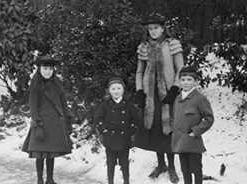Laetitia Withall facts for kids
Laetitia Withall (born August 30, 1881 – died March 11, 1963) was a writer and poet from Australia. She was also a brave and active suffragette. Suffragettes were women who campaigned for the right to vote in the United Kingdom.
Laetitia joined the Women's Social and Political Union (WSPU), a group fighting for women's votes. She used the name Leslie Hall during her protests. When she was sent to prison, she went on a hunger strike. This meant she refused to eat. Because of this, she was force-fed. For her courage, she received a special award called the Hunger Strike Medal from the WSPU. This medal is now kept in the National Library of Australia.
Contents
Early Life
Laetitia Withall was born in Adelaide, Australia, in 1881. Her parents were Louisa Margaret Reed and Latham Augustus Withall, who was an architect.
When Laetitia was seven years old, her family moved to the United Kingdom. She lived there for the rest of her life. However, she always remembered her home country, Australia.
Fighting for Women's Rights
Laetitia was first arrested in Birmingham on September 18, 1909. She used the name Leslie Hall to protect her parents from any embarrassment.
On December 21, 1909, in Liverpool, she and another suffragette, Selina Martin, approached the Prime Minister, H. H. Asquith. They wanted to talk to him about women's right to vote. The Prime Minister did not answer them. Selina Martin then threw an empty ginger beer bottle into his empty car.
Both women were immediately arrested. They were held for six days before their trial. They were not allowed to have bail, even though Selina Martin promised they would not protest again until their trial. The women were taken to Walton Gaol. They were treated very roughly in prison.
Prison and Hunger Strike
On December 27, 1909, Laetitia Withall (as Leslie Hall) was sentenced to one month in prison with hard labour. Selina Martin received two months.
Back in prison, both women refused to wear the prison uniform. They also started a hunger strike again. They were put in straitjackets and placed in punishment cells. The authorities continued to force-feed them. This made them very weak.
They were finally released on February 3, 1910, because they were so ill.
Public Awareness
While they were in prison, the story of their harsh treatment became widely known. They had given statements to their friends during their trial.
The Home Secretary, Herbert Gladstone, wrote to The Times newspaper. He denied that the women had been treated badly. However, Mr. Gladstone's statements were often found to be untrue.
Laetitia Withall's signature is on a special banner. This banner was designed by Ann Macbeth at the Glasgow School of Art. It is now kept at the Museum of London. It is a symbol of the suffragette movement.
Later Life and Legacy
Laetitia Withall was also a poet and writer. She wrote books about spiritual topics. Some of her books include:
- A Traveller Through Time: Glimpses Of A Soul's Past (1928)
- The Window And Other Poems (1927)
- Of Meditation And Prayer (1934)
- Of Prayer. A Simple Talk (1932)
- When Half-Gods Go. A Spiritualistic Composition (1922)
In 1939, Laetitia Withall was living in Broadstairs, Kent. She passed away there in 1963, at the age of 82. She never married.
In 1961, when she was 80 years old, she gave her Hunger Strike Medal to the National Library of Australia. This ensures her bravery and contribution to women's rights are remembered.
See also
 In Spanish: Laetitia Withall para niños
In Spanish: Laetitia Withall para niños


